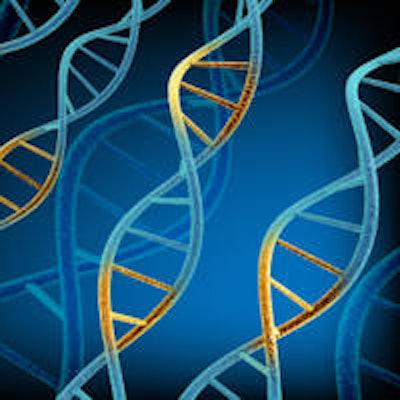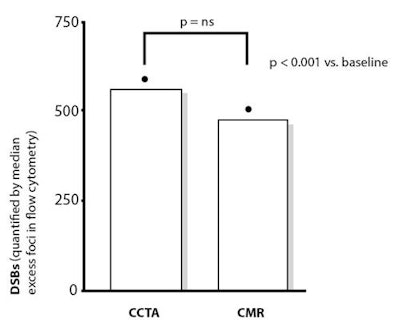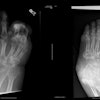
Prompted by the lively recent debate about the possible carcinogenic risk in cardiac imaging for detecting coronary artery disease, Swiss researchers say they've found no significant differences between ultralow-dose coronary CT angiography (CCTA) and cardiovascular MR (CMR) imaging in this area.
Reports about the immediate post-CMR DNA double-strand breaks in T lymphocytes have prompted concern, but detailed evidence of CMR-induced DNA damage in lymphocytes, alterations of blood cells, and their temporal persistence have not emerged. Against this background, Dr. Julia Stehli and colleagues from the cardiac imaging section in the department of nuclear medicine at Zurich University Hospital decided to compare the carcinogenic potential of ultralow-dose CCTA with that of routine CMR.
 Statements about the clinical relevance of DNA double-strand breaks are impossible, Dr. Julia Stehli told ESC 2016 delegates.
Statements about the clinical relevance of DNA double-strand breaks are impossible, Dr. Julia Stehli told ESC 2016 delegates.As a surrogate marker for carcinogenic risk, the group assessed DNA double-strand breaks (DSBs) before and after noninvasive imaging with flow cytometry in the peripheral blood mononuclear cells of patients who were consecutively recruited to undergo either CMR (n = 20) or ultralow-dose CCTA (n = 21).
All CCTAs were performed on a 64-slice CT unit. To achieve an ultralow-dose exam, tube voltage and current were adapted to body mass index (BMI [kg/m2] / tube voltage [mA] / tube current [kV]: < 22.5/150/80, 22.5-24.9/165/80, 25.0-27.4/180/80; 27.5-29.9/195/80, ± 30.0/210/100). The images were reconstructed using a novel, model-based iterative reconstruction algorithm, Stehli explained.
The team performed CMR according to the standard clinical protocol (gradient echo, steady-state and balanced free precession, FastSE, T2-weighted double-inversion black-blood spin-echo, inversion-recovery segmented gradient echo) on a 1.5-tesla MR system.
There was no significant differences between the two groups in terms of age, gender, or BMI (p > 0.05), she reported. The average effective radiation dose in the CCTA group was 0.26 ± 0.11 mSv. Analysis of flow cytometry revealed that both ultralow-dose CCTA and CMR induced a significant increase in DSBs (p < 0.01) without significant difference between CCTA and CMR (p = 0.497), as shown in the figure.

Technical refinements that allow CCTA with a submillisievert fraction of effective radiation dose for the accurate interpretation of coronary arteries lead to very low induction of DSBs, comparable to that of after routine CMR, according to Stehli.
"We cannot say anything about the clinical relevance of DNA double-strand breaks," she told attendees during a moderated poster session at last week's European Society of Cardiology (ESC) congress in Rome. The more radiation dose we use, the more DNA double-strand breaks we get, but we cannot say whether this leads to cancer, she added.


















